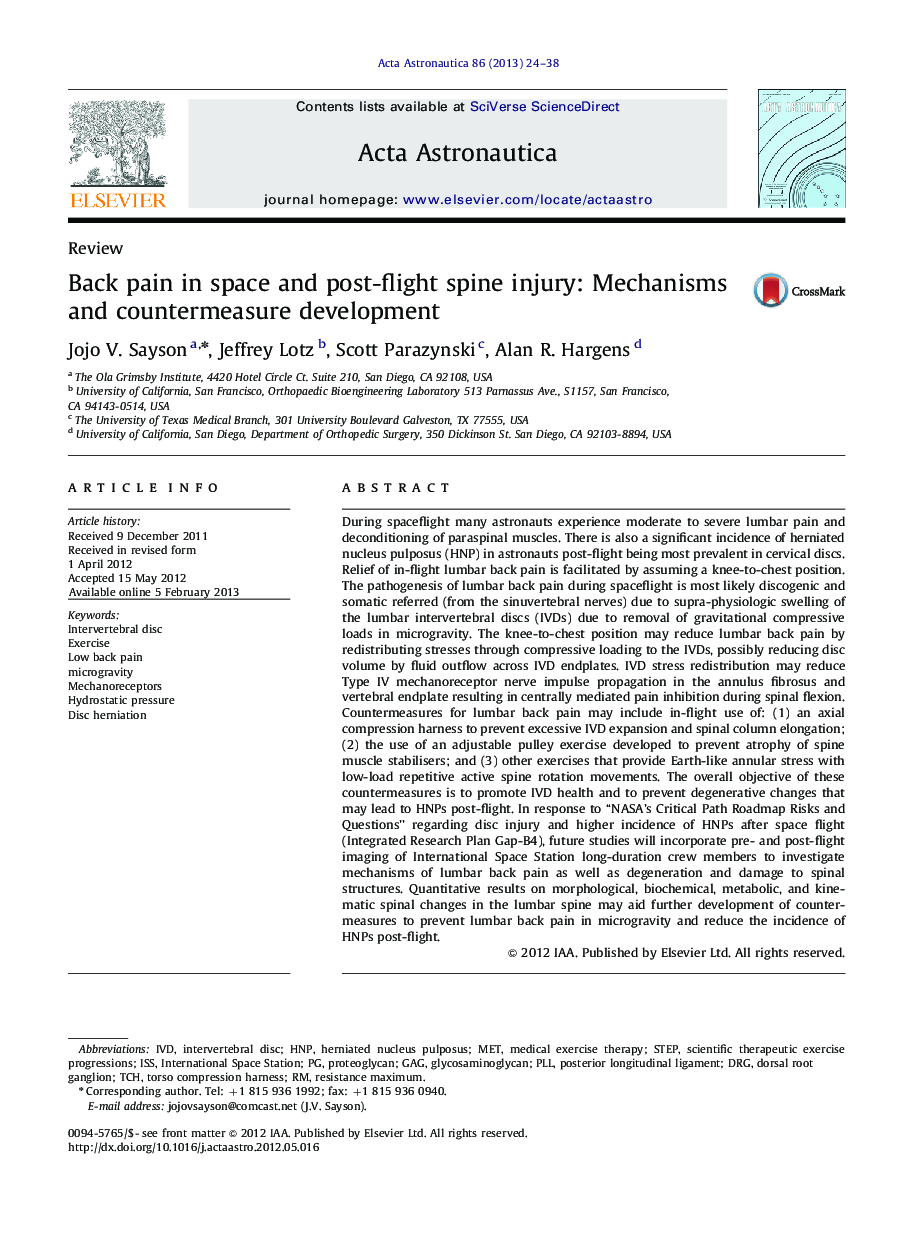| کد مقاله | کد نشریه | سال انتشار | مقاله انگلیسی | نسخه تمام متن |
|---|---|---|---|---|
| 1715002 | 1519964 | 2013 | 15 صفحه PDF | دانلود رایگان |

During spaceflight many astronauts experience moderate to severe lumbar pain and deconditioning of paraspinal muscles. There is also a significant incidence of herniated nucleus pulposus (HNP) in astronauts post-flight being most prevalent in cervical discs. Relief of in-flight lumbar back pain is facilitated by assuming a knee-to-chest position. The pathogenesis of lumbar back pain during spaceflight is most likely discogenic and somatic referred (from the sinuvertebral nerves) due to supra-physiologic swelling of the lumbar intervertebral discs (IVDs) due to removal of gravitational compressive loads in microgravity. The knee-to-chest position may reduce lumbar back pain by redistributing stresses through compressive loading to the IVDs, possibly reducing disc volume by fluid outflow across IVD endplates. IVD stress redistribution may reduce Type IV mechanoreceptor nerve impulse propagation in the annulus fibrosus and vertebral endplate resulting in centrally mediated pain inhibition during spinal flexion. Countermeasures for lumbar back pain may include in-flight use of: (1) an axial compression harness to prevent excessive IVD expansion and spinal column elongation; (2) the use of an adjustable pulley exercise developed to prevent atrophy of spine muscle stabilisers; and (3) other exercises that provide Earth-like annular stress with low-load repetitive active spine rotation movements. The overall objective of these countermeasures is to promote IVD health and to prevent degenerative changes that may lead to HNPs post-flight. In response to “NASA’s Critical Path Roadmap Risks and Questions” regarding disc injury and higher incidence of HNPs after space flight (Integrated Research Plan Gap-B4), future studies will incorporate pre- and post-flight imaging of International Space Station long-duration crew members to investigate mechanisms of lumbar back pain as well as degeneration and damage to spinal structures. Quantitative results on morphological, biochemical, metabolic, and kinematic spinal changes in the lumbar spine may aid further development of countermeasures to prevent lumbar back pain in microgravity and reduce the incidence of HNPs post-flight.
► IVDs are likely back pain generators due to abnormal disc expansion.
► Loss of cyclic IVD hydrostatic pressure variance disrupts fluid shifts/nutrition.
► IVD deformation suggests pain mechanism via nociceptors and sinuvertebral nerves.
► Knee-to-chest position relief compresses IVDs and stretches posterior soft-tissues.
► Countermeasures may include axial loading, exercise, and active spine movements.
Journal: Acta Astronautica - Volume 86, May–June 2013, Pages 24–38